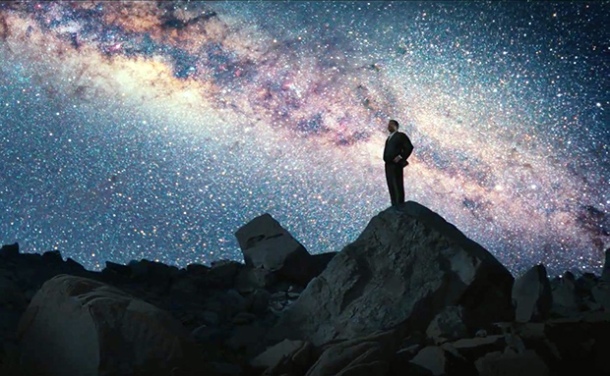“The science of today is the technology of tomorrow.” – Edward Teller
In the day-to-day studying for my astrophysics degree I never think about why we pursue it this science. For myself I can say, “I find it fascinating: the exploration, the attempts to glean some understanding of the universe and her mysterious workings.”
However, sometimes when I am at a party and I get asked what I am studying, someone asks, “Why do we put so much effort into space exploration.” Admittedly, my knee-jerk reaction is to simply spout, “Space is awesome! How can you even ask that question?” but that isn’t a real answer. So with the start of this blog and the subject of my first article, I decided that maybe it’s important to spend the time researching and understanding the precise reasons we spend effort and money on our NASA programs and other space exploration initiatives.
I would first like to point out that historically, every field of science has had to face that question; its initial foundations seemingly useless. Without going into great detail, biology, chemistry, and physics have all contributed greatly to our current existence. The computer you are using? Thank physics and chemistry, because it is our understanding of electrical currents and the elements that we use as conduits that you can check your Facebook and keep up with mom who lives not nearby. Advances in modern medicine, technology, and infrastructure are all thanks to one form of science or another, but that’s just scraping the ice burg. Essentially every little thing that we take for granted on a daily basis is thanks to pioneers of science. So what has space exploration shown us for all the money we spend?
Let’s address first, the idea that the USA, or any country for that matter, spends “a lot of money” on space exploration. In 2011 NASA received about 18 billion dollars ($18,000,000,000) in funding. Wow! As a college student- that’s a lot of money. That’s a lot of money for just about anyone, except the US Government. Hear me out: In 2011 the US spending budget equaled 3.6 trillion dollars ($3,600,000,000,000) – notice the extra set of zeros. I know those numbers are huge so let’s put it this way, NASA received 0.6% of the country’s total spending. That would be like giving someone $6 out of your $1,000 paycheck. Doesn’t seem so bad now, does it? I won’t argue about how efficiently NASA uses that money. That isn’t the point. The point is: we don’t spend that much and cutting back on our NASA spending won’t make any real dent in the budget. The chart below is a good representation of the money distribution in the US budget. NASA is over in the slew of tiny slivers that are hard to separate out.

So now that we have cleared up and given perspective to how much the government spends on space exploration, let’s talk about why. There haven’t been a lot of discoveries that have made their practical, everyday use apparent yet, but there are some things you might not expect have come from NASA’s research that we use today for the most mundane things.
For example, would you have ever thought that the material coating infrared antennae would end up in your mouth? It’s true. In 1961 NASA’s Advanced Ceramics Research was working with Ceradyne on a special coating to protect infrared antennae on heat-seeking missile trackers. They developed translucent polycrystalline alumina (TPA). The material was durable and translucent and was just the material a company called Unitek was looking for when they began research making braces that were aesthetically more pleasing but still functional. The first invisible braces were released in 1987 based on a technology developed by NASA.
Do you remember when eye glasses were made out of glass? Neither do I. That’s because in 1972 the FDA ordered that all eye wear stop being made from glass. This lead to plastic lenses, which scratch easy. What a pain! Enter NASA to save the day! A scientist, Ted Wydeven, who worked at the Ames Research Center was working on a water filtration system. Using an electric discharge of an organic vapor, he coated the filter with a thin plastic layer. This plastic turned out to be extremely durable! This was later used on astronaut’s helmets and eventually made its way into the commercial sector to coat glasses. To learn more about the process used to make the coating click here.
Are you convinced yet that the money given to NASA is worth the while? No? That’s okay, there is more. Memory Foam is another great invention by NASA. This one is fairly common knowledge since the fact that it was “space technology” was a selling point when memory foam first made it on to the scene. The foam is a polyurethane-silicone plastic. It is temperature sensitive and helps to evenly distribute the weight while eliminating pressure points. Besides its obvious use in shuttles, it is also used for bed-ridden patients to help them ward off bedsores. You can also find memory foam on motorcycle seats, and even used to make the use of prosthetic limbs more comfortable. Racing car seats are also equipped with this super comfortable material.
Okay, okay admittedly these innovations are not particularly changing the course of humanity, so let’s look at a more serious contribution NASA has made. NASA uses a lot of fuel and needs a lot of propulsion to get its gear and staff out of Earth’s atmosphere. Naturally NASA scientists would look for a way to get the most bang for their buck. Recently, Orbitec a company contracted by NASA came up with a new engine propulsion system. When fuel is pumped into the combustion chamber it is spun up creating a vortex. This was useful to NASA because it kept the combustion chamber walls cool, resulting in less wear and tear on engine parts. This system was found to have another use: in fire suppression.
Recently studies were conducted at the Vandenberg Air Force Base. Empty houses were set on fire. The traditional fire hose technology which pumps out water at 100 gallons per min (g/m) at 125 psi was compared to a fire hose utilizing the vortex technology NASA had developed. The “vortex” hose releases only 20 g/m but at a psi of 1,400. So how did those results come out? The standard system took 1 minute and 45 seconds to snuff out the fire and used 220 gallons of water. The “vortex” system, using only 13.6 gallons, put the fire out in 17.3 seconds… More importantly the “vortex” hose was managed by one person. The standard hose requires a few people to control it. If you can’t appreciate the implications of this research, there is no convincing you that science is worth the cost.
NASA’s research has improved a lot of other technologies as well. Water filters now have antimicrobial properties, battery operated drills are more powerful, your cell phone works because of NASA’s initial work with satellite technology. The amount of cool and useful things that have come from space exploration is widely unknown. I was surprised by some of the things I learned and proud. I am more excited to go into this field than ever, knowing the my contributions might fruit something that everyone someday uses.
The research and discovery that NASA does is at the heart of all the advances (good and bad) that humanity has accomplished. Christopher Columbus set off to prove the world was round. Isaac Newton defined gravity. Max Planck progressed our understanding of quantum mechanics. Scientists and explorers have all changed the course of humanity. The same people today who work at NASA, peer up at the stars, or crunch numbers and mix materials together are the same sort of people that have given us phones, computers, electricity, cars, and modern medicine. To deny the usefulness of their research is to deny the advances we have today.
Links:
www.bea.gov/iTable/iTable.cfm?ReqID=9&step=1
curiosity.discovery.com/topic/physics-concepts-and-definitions/ten-nasa-inventions.htm
spinoff.nasa.gov/Spinoff2011/ps_5.html

